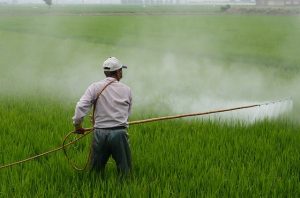Pesticide Residues in Food Remain Low in EU
Food consumed in the European Union continues to be largely free of pesticide residues or contains residues that fall within legal limits according to the latest monitoring report published by EFSA. The report has revealed that more than 97% of food samples collected across the EU in 2015 were within legal limits, with just over 53% free of quantifiable residues.
This report looks at an overview of the 2015 official control activities of EU Member States, Iceland and Norway, with the figures showing to be in line with those recorded in 2014. The reporting countries analysed 84,341 samples for 774 pesticides. The majority of the samples (69.3%) originated from EU Member States, Iceland and Norway, while 25.8% concerned products imported from third countries. The origin of the remaining samples was not reported.
97.2% of the samples analysed fell within the limits permitted in EU legislation, while 53.3% of the samples tested were free of quantifiable residues. 43.9% contained residues not exceeding legal limits.
Legal limits were exceeded in 5.6% of the samples from non-EU countries, down from 6.5% in 2014. For products from EU and EEA countries, legal limits were exceeded in 1.7% of samples, a slight year-on-year increase (from 1.6%).
Of the samples of foods intended for infants and young children, 96.5% were free of residues or residues fell within legal limits. For organic foods, 99.3% were residue-free or within legal limits. The majority of samples of animal products (84.4%) were free of quantifiable residues.
The annual report from the EFSA also analyses the results of the EU-coordinated control program (EUCP), under which reporting countries analyse samples from the same “basket” of food items.
For 2015 the products were aborigines, bananas, broccoli, virgin olive oil, orange juice, peas, sweet peppers, table grapes, wheat, butter and eggs. The findings showed that the highest exceedance rate recorded was for broccoli, of which 3.4% of the samples showed an excess of pesticides. This was followed by table grapes at 1.7%. Only rare exceedances were found for olive oil, orange juice and chicken eggs, and no exceedances were recorded for butter. EFSA also performed a dietary risk assessment based on the EUCP.
For both short-term (acute) and long-term (chronic) exposure the Authority concluded that the risk to consumers was low. The same products were also analysed in 2012, since when the overall exceedance rate has fallen slightly from 0.9% to 0.8% in 2015.

































